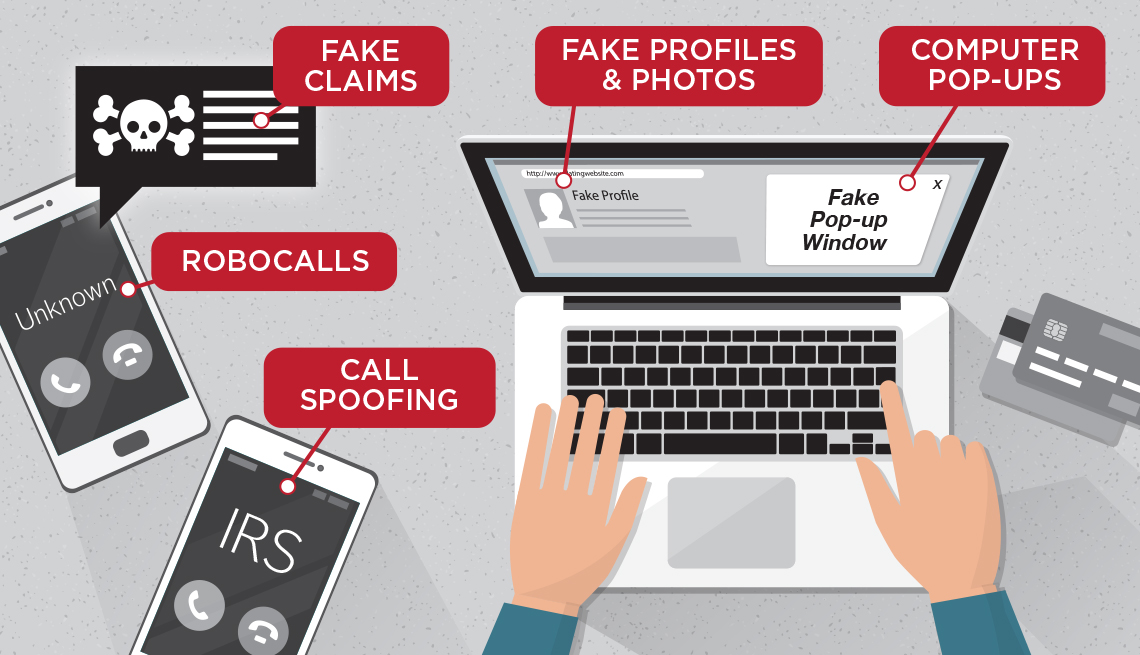
In today’s digital landscape, online scams have become increasingly sophisticated, targeting individuals across the globe.
According to a recent FBI report, Americans lost a whopping $10.3 billion to various internet scams in the previous year alone. This alarming statistic showcases the increasing sophistication and prevalence of online scams that target individuals and businesses indiscriminately.
With the internet becoming an integral part of our daily lives, it’s crucial for users to be aware of these deceptive schemes. From simple email phishing to intricate frauds, scammers employ a range of tactics to exploit unsuspecting victims. As such, it’s imperative to recognize the signs of these scams and take measures to protect one’s personal and financial information.
Understanding common fraudulent platforms and knowing how to recover lost funds are crucial steps in safeguarding oneself.

Common Online Scam to Avoid
- Phishing Scams: Attackers send emails or messages impersonating trusted entities to steal personal information. For example, the FBI has warned about “smishing” attacks, where fraudulent SMS messages deceive recipients into divulging personal information.
- Fake Investment Platforms: Scammers create bogus investment opportunities, especially in cryptocurrencies. In the UK, victims lose millions weekly to such schemes, often involving fake endorsements from celebrities like Elon Musk.
- Love and Romance Scams: Fraudsters build fake relationships online to manipulate victims into sending money. The “pig butchering” scam combines romance with investment fraud, leading to significant financial losses.
- Tech Support Scams: Unsolicited calls or pop-ups claim your device is compromised, urging you to grant remote access or pay for unnecessary services.
- Spoofed URLs: These involve deceptive web addresses mimicking legitimate sites, leading users to malicious platforms designed to steal information.
FREE CONSULTATION FORM
Steps to Recover Lost Funds
- Contact Financial Institutions: Immediately notify your bank or credit card company about unauthorized transactions. They can freeze accounts and potentially reverse fraudulent charges.
- Report to Authorities: File a report with local law enforcement and relevant agencies. In the U.S., the Federal Trade Commission (FTC) and the FBI’s Internet Crime Complaint Center (IC3) handle such complaints.
- Seek Legal Counsel: Consulting with an attorney experienced in fraud recovery can provide guidance on potential legal actions.
- Utilize Support Services: Organizations like AARP’s ElderWatch offer resources and support for scam victims, especially seniors.
- Monitor and Protect: Regularly check credit reports for unauthorized activities. Implementing credit freezes and enabling two-factor authentication can enhance security.
CLAIMS ASSESMENT
Preventive Measures
- Stay Informed: Educate yourself about common scam tactics. Recognizing red flags can prevent victimization.
- Verify Sources: Always confirm the legitimacy of unsolicited communications, especially those requesting personal information or money.
- Use Security Features: Enable multifactor authentication on accounts and be cautious of unsolicited messages or calls.
Nations Most Frequently Targeted in Global Phishing Attacks
In 2022, internet users in Vietnam faced the highest number of phishing attacks, with a notable attack rate of 17.03 percent. Macao came in a close second that year, experiencing an attack rate close to 14 percent. Meanwhile, Madagascar was the third most targeted, with a rate of 12 percent.
- Vietnam – 17.03%
- Macau – 13.88%
- Madagascar – 12.04%
- Algeria – 11.05%
- Ecuador – 11.05%
- Malawi – 10.91%
- Brunei – 10.59%
- Brazil – 10.57%
- Morocco – 10.43%
- Portugal – 10.33%
CLICK HERE TO RECOVER FUNDS
By staying vigilant and informed, individuals can significantly reduce the risk of falling prey to online scams and navigate the digital world more securely.
